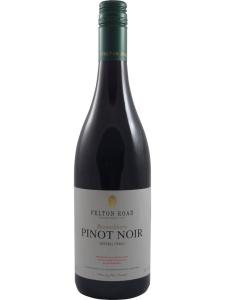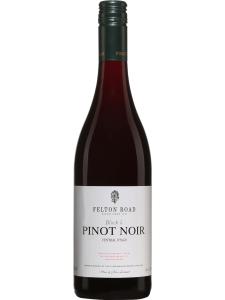Bannockburn is a wine-producing sub-zone in the south-east of New Zealand's Central Otago region. The mountainous area is one of the warmest and driest parts of Central Otago, and the wines, predominantly made from Pinot Noir, are rich and brambly, with firm tannins and excellent ageing potential. Pinot Noir vines are joined in the vineyards of Bannockburn by Riesling, Chardonnay and Pinot Gris.
The small town of Bannockburn is roughly 20 miles (32km) east of Queenstown, nestled in the Cairnmuir Mountains on the southern edge of the Kawarau River. Most of the vineyards lie along Felton Road, a two-mile-long (3km) stretch running west from Bannockburn that is home to some of the most famous wine producers in Central Otago, including Felton Road and Mount Difficulty. The road has vineyards on both sides, including up slopes that reach into the mountains. Some wine sites can also be found around Cairnmuir and Cornish Point in the east of the region.
©NZWA/Olssens Garden Vineyard
Bannockburn was settled in the 1860s as a gold-mining town. Land around the Kawarau River was found to be full of the mineral and enterprising settlers flocked to the area to find their fortune. Today, this is reflected quite heavily in the terroir of Bannockburn. Much of the gravel soil was deposited in the area from higher elevations as a direct result of sluicing and mining activity during this time, and this has also contributed to the dearth of vegetation hereabouts. The effect of gold mining on the landscape is not unique to Bannockburn: the terroir in parts of the Sierra Foothills and Lodi regions in California has been similarly modified by the Californian Gold Rush of the 1850s.
Bannockburn's 'man-made' soils have proved excellent for premium viticulture and, along with the naturally occurring schist and greywacke gravels and heavier clay soils, have given growers excellent soil diversity in the vineyard. The more gravel-based soils are free-draining and low in nutrients, causing the vines to develop deep root systems to get at nutrients deeper in the ground. The heavier clay soils are better at retaining water, which means that vignerons can largely forgo irrigation during the dry summer months. The high-quality grapes grown on both of these soil types tend to be small and concentrated, with thick skins, leading to intensity and structure in the wines.
Bannockburn has one of the warmest, driest climates in Central Otago, a fact that has earned it the nickname 'heart of the desert'. Warm summers are followed by long autumns, although the harvest here can come almost a month earlier than in the cooler region of Gibbston. This warmer climate leads to ripe fruit flavors in the grapes, and Bannockburn Pinot Noir is often heavier and more tannic than wines from other parts of Central Otago.
Bannockburn is one of Central Otago's best-known sub-regions, and the proximity of the area to the tourist Mecca of Queenstown is probably as much of a contributing factor to the success of Bannockburn wines internationally as the high quality of the terroir.



